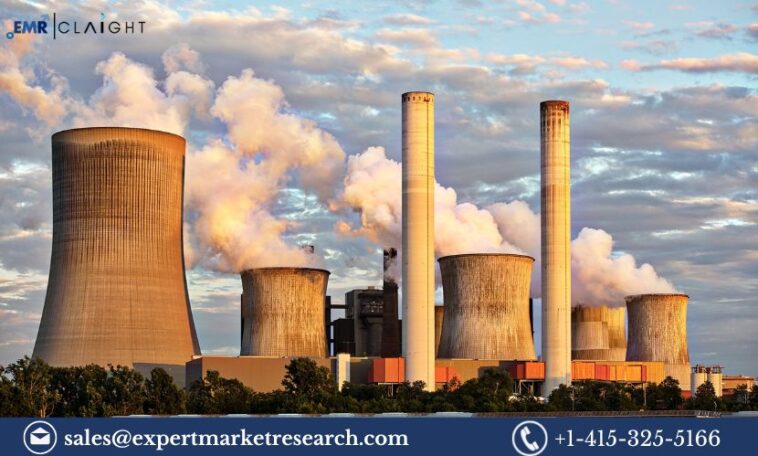Introduction
Paraformaldehyde (PFA) is a white, crystalline solid that is a polymer of formaldehyde, and it is primarily used as a precursor in the production of resins, adhesives, and in various chemical applications. As a versatile compound, it plays a crucial role in industries like textiles, construction, automotive, and agriculture. Paraformaldehyde is highly valued for its ability to release formaldehyde under controlled conditions, which makes it a key ingredient in the production of products such as plastics, paints, and disinfectants. The growing demand for high-quality resins, disinfectants, and agricultural chemicals has led to an increase in the production of Paraformaldehyde globally. This Paraformaldehyde (PFA) manufacturing plant project report explores the essential aspects of setting up a Paraformaldehyde (PFA) manufacturing plant, focusing on raw materials, production processes, required equipment, market demand, financial considerations, and regulatory requirements.
Key Components of Paraformaldehyde Manufacturing
1. Raw Materials
The primary raw materials for the production of Paraformaldehyde include:
-
Formaldehyde (CH2O): Formaldehyde is the key raw material used to produce Paraformaldehyde. It is typically available in aqueous solution form (37% formaldehyde solution), often referred to as “formalin.”
-
Water (H2O): Water is used to dilute the formaldehyde and aid in the condensation process during PFA formation.
-
Catalysts (Optional): In some processes, catalysts such as acids or bases may be added to facilitate the polymerization reaction.
Get a Free Sample Report with Table of Contents@
2. Manufacturing Process
There are primarily two methods for manufacturing Paraformaldehyde:
1. Thermal Polymerization Process
This is the most widely used method for Paraformaldehyde production. In this process, formaldehyde is heated under controlled conditions, leading to the formation of Paraformaldehyde through polymerization.
Steps in the Thermal Polymerization Process:
-
Formaldehyde Preparation: Formaldehyde solution is first concentrated by removing excess water through evaporation.
-
Polymerization: The concentrated formaldehyde is then heated to a temperature of around 120°C to 180°C. This thermal polymerization causes the formaldehyde molecules to bond together, forming paraformaldehyde. The polymerization reaction can be controlled to achieve the desired molecular weight and structure.
-
Cooling: After the polymerization reaction, the paraformaldehyde is cooled to solidify it into a crystalline form.
-
Purification: The resulting paraformaldehyde is purified to remove any residual formaldehyde or other by-products. This may involve filtration or washing with water.
2. Catalytic Polymerization Process
In this method, the polymerization reaction is catalyzed by an acid or base, which can speed up the process and make it more efficient.
Steps in the Catalytic Polymerization Process:
-
Formaldehyde and Catalyst Mixing: Formaldehyde is mixed with an acid or base catalyst to initiate the polymerization reaction.
-
Polymerization: The mixture is heated under controlled conditions to allow the polymerization to occur. The temperature is maintained to control the rate of the reaction and the final molecular weight of the paraformaldehyde.
-
Cooling and Crystallization: The reaction mixture is cooled, and paraformaldehyde crystallizes out.
-
Purification: Similar to the thermal process, purification steps are employed to remove any unreacted formaldehyde and other impurities.
3. Required Equipment for Manufacturing
Setting up a Paraformaldehyde manufacturing plant requires several pieces of equipment:
-
Reactors: The primary equipment used to carry out the polymerization reaction. These reactors must be capable of handling high temperatures and pressures and should be made from materials that can resist corrosion from formaldehyde.
-
Evaporators: These are used for concentrating formaldehyde solution by evaporating excess water.
-
Cooling Systems: These are essential to cool the paraformaldehyde after the polymerization process to solidify it into a crystalline form.
-
Filtration Units: For purifying the paraformaldehyde by removing residual formaldehyde and other impurities.
-
Drying Equipment: If required, drying units can be used to remove any moisture from the final paraformaldehyde product.
-
Packaging Equipment: Once the paraformaldehyde is purified and dried (if necessary), it is packaged for distribution. This includes bulk packaging or smaller retail packages.
4. Market Demand and Trends
Paraformaldehyde’s broad range of applications means that the global market demand for this chemical is growing. Key factors contributing to this demand include:
-
Resins and Plastics Production: Paraformaldehyde is used in the production of resins like phenolic, urea-formaldehyde, and melamine-formaldehyde resins, which are widely used in construction, automotive, and other industries.
-
Disinfectants and Sanitizers: Paraformaldehyde is used in the formulation of disinfectants and sanitizers, especially for controlling microbial growth in industrial applications and healthcare settings.
-
Agriculture: Paraformaldehyde is utilized as a fumigant and sterilizing agent in agriculture to protect crops from fungal and bacterial contamination. It is also used in soil treatment.
-
Textile Industry: Paraformaldehyde is used in the textile industry for manufacturing permanent-press fabrics, which require the application of formaldehyde-based resins.
-
Growing Demand for Eco-Friendly Products: As more industries look for efficient, non-toxic alternatives, Paraformaldehyde’s relatively low environmental impact compared to other formaldehyde-based compounds boosts its popularity.
5. Cost Considerations
Setting up a Paraformaldehyde manufacturing plant involves substantial upfront costs. Some of the major investments include:
-
Land and Facility Setup: The cost of land acquisition, construction of production facilities, and installation of essential utilities like water, electricity, and waste management systems.
-
Machinery and Equipment: This includes the purchase of reactors, evaporators, cooling systems, filtration units, and drying equipment.
-
Raw Materials: The procurement of formaldehyde and any required chemicals, as well as catalysts and water, forms a significant part of the initial costs.
-
Labor: Hiring skilled labor for operations, safety, and maintenance of the plant.
Media Contact
Company Name: Claight Corporation
Contact Person: Lewis Fernandas, Corporate Sales Specialist — U.S.A.
Email: [email protected]
Toll Free Number: +1–415–325–5166 | +44–702–402–5790
Address: 30 North Gould Street, Sheridan, WY 82801, USA
Website: www.expertmarketresearch.com
Aus Site: https://www.expertmarketresearch.com.au
This post was created with our nice and easy submission form. Create your post!





